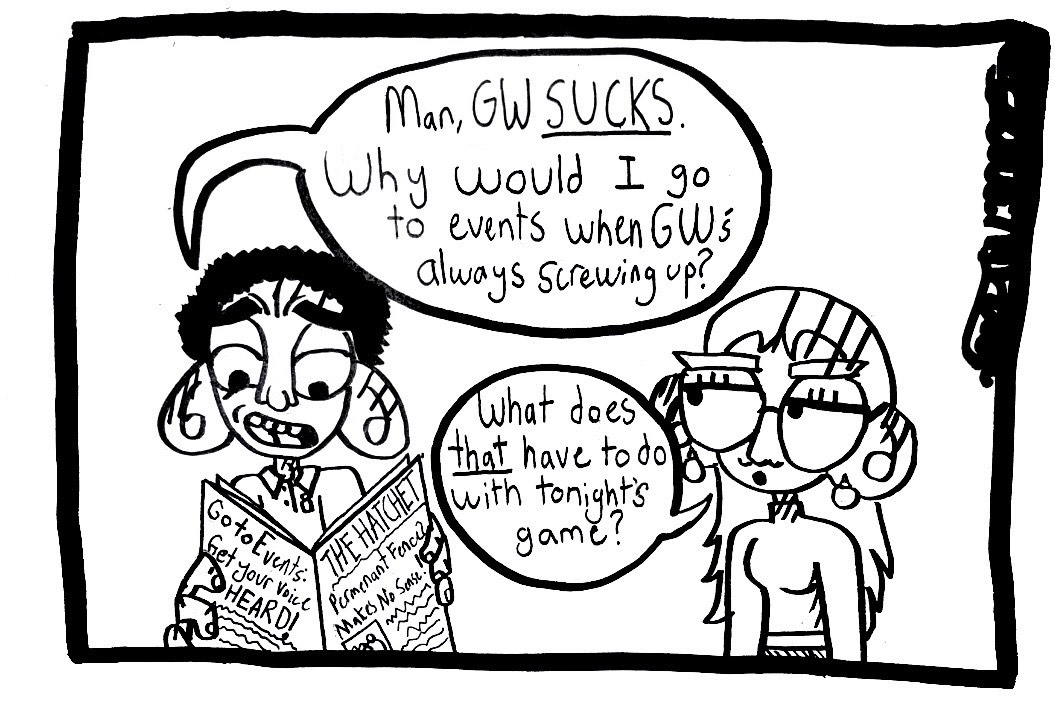Transitioning to a four-class, four-credit structure has the potential to improve GW in a number of ways. The four-by-four plan would enable the University to decrease the percentage of part-time faculty and perhaps cut class sizes. Rather than developing a superficial “Wikipedian” grasp of course material under the current system, students could truly master course content by focusing on quality, not quantity, under the four-by-four plan.
As The Hatchet has mentioned in numerous editorials, however, the proposal could easily flounder. Administrators have not provided a more concrete plan for implementing the program, leading in part to the Faculty Senate’s rejection of it. This plan has the potential to greatly benefit GW’s academic programs; however, the program’s stewards must ensure that all the details of four-by-four are made clear so that the University as a whole can debate the merits of the proposal.
While the Faculty Senate provided a number of reasons for opposing the plan, it takes only a little common sense to read between the lines and see that the prospect of tenure-track faculty losing their jobs might have played a big part in the Senate rejecting the proposal outright.
GW has the highest tuition in the country, and it has one of the lowest percentages of full-time faculty; it would be an ill-conceived move to further decrease the latter number. To be sure, some part-timers are dedicated, but others tend to be less academically rigorous and more unreliable than their full-time counterparts. And I don’t really blame them. How much time would you spend correcting papers and writing recommendation letters if you were paid less than $3,000 to teach a semester-long course?
Furthermore, GW administrators need to adequately refute opponents of the plan to validate four-by-four. Professor Anthony Yezer, a member of the Special Senate Committee on Four-by-Four, wrote in an e-mail that the Faculty Senate unanimously rejected the plan because it is based upon the false premises that students require more challenges, that students will learn more with less class time, and that four-by-four will save money.
To debunk the first proposition, Yezer points out that “class surveys currently indicate that about 63 percent of students find classes difficult or very difficult and only 14 percent find them easy or very easy.” At the risk of sounding like the kid who asks for more homework from teacher, shouldn’t something closer to 100 percent of students find their courses difficult? If we’re not being challenged by tough classes, then what is the point of going to school?
To support his contention that decreased class time hurts students, Yezer cited a study that showed “learning and improved outcomes are positively associated with time in the classroom.” Donald Lehman, vice president of Academic Affairs, notes that most of the best schools in the country have a four-by-four system and schools such as Yale University simply count courses rather than credit hours.
Also, not all faculty members agree that decreasing hours in the classroom is bad for students. Professor Tyler Anbinder, chair of the History Department, supports four-by-four because “it allows students more reading in heavy disciplines such as history to do more in-depth work in each of their classes, rather than skimming the surface.”
The exact amount of money GW would save with four-by-four is unclear. The administration assumes that each student will take one fewer class, thus saving money, but Yezer contends that many students currently taking four classes will continue to do so. Ultimately, administrators need to do their homework and show how much money will be saved from the program. Lehman contends that “all the money saved by four-by-four would be directly reinvested in academic programs and not in the capital fund.” Faculty members should take him at his word.
Right now, there needs to be a forthright debate about four-by-four for the entire GW community to see. Perhaps supporters and opponents could even duke it out in the pages of The Hatchet. This curriculum change would bring positive change for the University, but unless administrators strongly inform the GW community about its positive aspects, four-by-four will go nowhere.
-The writer, a senior majoring in international affairs and history, is a Hatchet columnist.




